Pros: Display, build quality, connectivity & functionality, boot-up time, Nahimic audio software
Cons: Price, overall performance, big bezels, audio jack placement, in-built speakers
Build Quality: 9/10
Design & Looks: 8/10
Display Quality: 10/10
Performance in relation to its price: 4.5/10
Sound Quality: 3/10
Sound Quality with Nahimic audio software: 7/10
Value: 4/10
My final Rating: 5/10
Review Date: May 2015
Review Price: £1300
First of all I would like to thank MSI for sending me out the MSI 24GE 2QE for a trial review. I got to keep the all-in-one (AIO) PC for a set time, where I put it through its paces and tested it on a daily basis to see how it compared to my actual desktop PC.
The MSI 24GE 2QE can be bought for near £1300 or around $1300 for the basic version and $1600 for the version with a few more features.
The AIO comes in different shapes and forms, where the GPU, screen and even the additional extras can differ.
Before going into my written review here’s my video review:
The version I received had the following:
- OS: Windows 8.1 64bit
- Chipset: Intel HM87
- CPU: Intel Core i7-4720HQ 2.6-3.6GHz
- Memory: 16GB (8×2) DDR3L @ 1600Mhz
- Graphics: NVIDIA GeForce GTX 960M with 2GB GDDR5 VRAM
- Display: 23.6” 1920×1080 IPS LED Panel with an aspect ratio of 16:9
- SSD: 128GB mSATA SSDx2 (RAID 0)
- HDD: 2,5″ 7200rpm 1TB running on SATA III
- Optical Drive: Blu-ray Disk Burner
- Audio: 2x 5W Speakers with Nahimic Audio Enhancer
- WLAN: Intel 3160 Wireless 802.11ac
- Bluetooth: 4.0
- USB 3.0 port: 4x (1 with Super Charger)
- USB 2.0 port: 1x
- Card Reader: 3-in-1 (SD, MMC, MS)
- Webcam: 2M-pixel HD
- Other ports: 1x E2200 LAN port, 1x HDMI in, 1x HDMI out, 1x Mic-in/Headphone-out
- Wall Mount: VESA 100x100mm
Optionals, that can be found in other versions:
- Keyboard & Mouse
- 3K or 4K screen
- 10-Point Touchscreen display
More info can be found on MSI’s website.
With the introduction out the way, let’s get on to this review!
Build Quality
First off the build quality, which plays an important role in an AIO.
Starting with the stand, it’s well built and sturdy meaning the PC doesn’t wobble when being used, especially if you have the touchscreen version.
However, the stand only allows you to tilt the monitor at a slight angle, and doesn’t allow you to rotate or pivot the screen without moving the whole PC and stand. I would have liked to see it do a little more, especially at its given price tag of £1300.
Looking at the construction of the PC it’s nice to see that good solid materials are used throughout its design, at the back of the PC there are a few vents, for the PC to defuse its hot air.
On the left-hand side of the PC, there are a few buttons and ports.
Here we can find the power button, a few monitor adjustment buttons, LEDs indicating if the PC is under workload and 2x USB 3.0 ports alongside the 3-in-1 card reader.
What I like about the left-hand side is that it’s somewhat concealed from your view and yet is easily accessible. With that said, I found that the headphone out and mic in 3.5mm jacks, should have been included here rather than underneath the monitor, where it’s hard to access. This is a simple design process, where MSI didn’t really think of the every-day usage of the PC. I personally use my headphones a lot when I game at home, and I know many others that use headphones, simply to not disturb anyone around them and in this respect it’s an absolute pain trying to plug in a headphone jack or microphone underneath the monitor.
It’s nice to see the USB slots and SD card reader here though, as they are accessible and were used quite a lot by myself.
On the right-hand side, there is a Blue-ray disk burner, which is nice to have included. Nowadays a lot of things are going digital but it’s always nice to have a backup way of installing software or drivers.
Under the monitor, there’s a few ports: 1x USB 2.0, 1x E2200 LAN port, 1x HDMI in, 1x HDMI out, 1x Mic-in/Headphone-out.
What’s the most interesting here is that it has both HDMI in and out, where you can connect up a console that uses HDMI as an output and display it via the 24GE 2QE. This feature makes it very useful for those, like me, who game on PC and like to have the option to game on console from time to time. I wouldn’t suggest using this solely as a monitor, as it makes it one of the most expensive monitors in the world, but it’s nice to have that option – it’s good thinking from MSI that a simple HDMI port enables console gamers top plug in their systems and use it – alternatively you could plug a second PC into the MSI AIO.
A small note – the included LAN port is useful for gamers and so is the Intel 3160 Wireless 802.11ac adapter, which gives it great wireless capabilities.
Below you’ll be able to see the wireless speed of my network, which was running on a 5Ghz frequency and hit an excellent score.

Finally to round off the build quality, I want to mention that the PC comes with an in-built mic and 2 Megapixel camera that are located at the top of the monitor. At the bottom of of the PC’s display, you’ll find two stereo 5W speakers, which I’ll get to later in this review.
Overall the build quality is good, although could have been slightly improved by the placement of the audio jacks and by having more functionalities on the stand.
Design & Looks
The design of the PC is decent, although I wasn’t a fan of its big bezels. I understand they have to be there, to cater for the webcam that’s located at the top and the speakers at the bottom, and more so the actual PC components. However, the bezels are still something that caught my eye quite quickly.
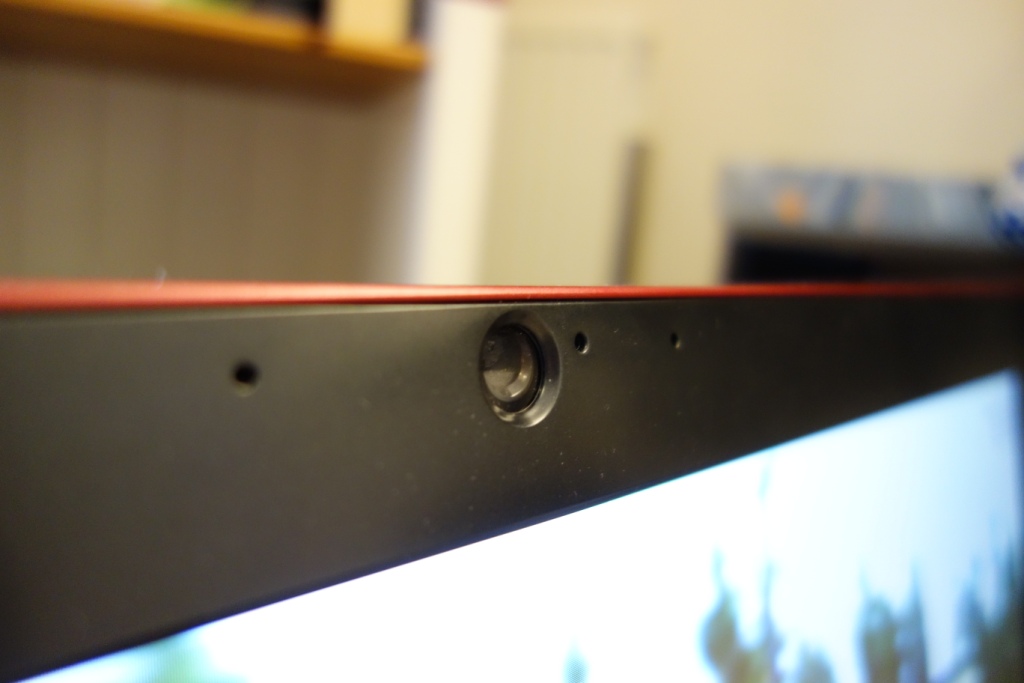
The look of the PC is well done, with the red and black theme that is present throughout the PC. This “MSI Gaming” look is a nice touch and it’s nice to see it included on the AIO PC.
On another note, it’s nice to see how thin this PC actually is – below you’ll see a picture comparing it to a CD sleeve, and it’s amazing how thin it actually is – this is great for its overall design, but the same cannot be said about the impact this has on its temperatures (more on that in just a bit).
Overall, the design and looks are decent, but when I first set my eyes on it, it just didn’t look like a £1300 PC – instead it reminded me of old an old CRT, which had massive bezels around the edge of the screen. This can be quite subjective, so I haven’t heavily marked it down. I do like the red/black theme that’s used throughout the PC.
Display Quality
The display plays an important role for any PCs out there, sometimes it can cause massive discussions about which panels are better for gaming.
In my experience of reviewing monitors, I found that TN panels did the best for having the most responsive times, but really lacked any colour accuracy. On the other hand some IPS/PLS panels were horribly bad at response time, whilst others where much better.
In this respect MSI used an IPS panel, which is a risk for gamers, as they want the fastest response time with the lowest latency. I’m pleased to report that the actual monitor itself responds very well and has very little input lag.
Running an aspect ratio of 16:9 at 1920×1080, making it full HD and at 60hz, the monitor has the right specs for the average gamer. It’s resolution, as stated before can be upped to 3K or 4K, but that comes by another, more expensive model with a different panel all together.
personally I think 3K and 4K are over-hyped at the moment, as there’s not enough affordable GPU power that can truly support it. Even SLI Nvidia GTX Titans struggle at 4K, let alone mobile GPUs, like the GTX 960M (more on this in the performance section).
The screen therefore played a great role in the overall experience of the PC. I found it perfect for gaming, in competitive games such as Counter-Strike Global Offensive and yet beautiful to look at whilst looking at photos. What’s interesting is that it came perfectly calibrated out the box. Despite knowing I have a review model, it means that the monitor can be calibrated to your liking and at a very high standard. I found the colours to be great, with the black tones being deep enough. There was no backlight bleed to worry about either, which was a pleasant surprise.
To round-off the section, I found the viewing angles and the lack of glare to be fantastic. The fact that I could view this monitor at ridiculous angles was great (this is aided by the fact that it uses IPS LED technology), and on top of that being able to play in bright sunlight without having to worry about horrible glare was a huge plus too!
Overall the monitor was perfect and fit for purpose, I couldn’t have asked for more here.
Performance
Now the performance is a huge aspect of the PC and is something I really stressed tested.
First of all the overall performance of the PC was blisteringly fast, even from boot, where it takes only 13 seconds to boot from cold. Shutdown time too, is extremely fast, and this is all thanks to Windows 8.1 which utilises a great kernel.
The installed OS was Windows 8.1 64Bit, which to me is a perfect combination for its specs. I personally prefer Windows 7, but sometimes you’ve got to hadn it to Microsoft for making a better kernel in Windows 8.x versions.
With the included SSDs (especially running in RAIO 0) normal usage was really quick, and coupled with its 16GB 1600Mhz DDR3L RAM, it could eat through anything I threw at it.
Just to top it off, it’s powered by an Intel Core i7-4720HQ CPU that runs on a stock clock of 2.6GHz that Turbo boosts to 3.6GHz under load. The i7 is a great addition as it utilises 4 cored and 8 threads (Hyper-threading) to process any data. This is useful for myself, as a video editor, where threads are quite important for faster rendering times.
More information about the CPU can be found on Intel’s website.
Overall the specs seem great on paper, but then I thought to stress test its GPU, the NVIDIA GeForce GTX 960M that comes with 2GB GDDR5 VRAM. Here’s where the tests I threw at it really started to cripple its performance. At £1300 I was expecting a good performer, albeit knowing the GTX960M included can’t really handle a lot, I still thought to test it and compare it to my desktop PC.
Here’s my PC Specs:
- CPU: De-lidded i7 3770k @ 4.5ghz
- GPU: MSI GTX960 with 2GB GDDR5 VRAM
- RAM: 16GB 1600mhz CL9 Corsair Vengeance
- MB: Asus Sabertooth Z77
- PSU: Corsair AX750
- CPU cooler: Antec H20 920
- Monitor: QNIX QX2710 1440p @ 96hz
- SSD: Corsair Force GT 120GB SSD
- HDD: Seagate Baracuda 3TB 7200rpm HDD
Important note:
Before getting into the test results I would like to state that the tests I had done on my PC, with various GPUs were done at 2560×1440. As the MSI 24GEX 2QE cannot run at this 2K resolution, tests were done at 1920×1080 and I therefore re-ran my GTX960 tests on my PC at 1080p to see how it compares. On the respective graphs below you’ll see two entried for the GTX960, where the 1080p benchmark is noted.
I should also stress (pun intended) that I performed these benchmarks at least three times over, in order to get an accurate result, which also eliminates any anomalies.
First off, the synthetic benchmarks!
Heaven 4.0 was the first test I ran:
As we can see from the above graphs, the GTX960M really didn’t cope all that well, in all areas it achieved near the lowest score, with its Min FPS and Max FPS being even lower than the GTX960 running at 1440p, which is quite shocking!
Despite not looking like much on paper 2560×1440 is double the resolution of 1920×1080 and often really cripples GPU performance. Thereby seeing a GTX960 at 1440p outperform a GTX960M at 1080p came as a unpleasant surprise.
Next was Valley 1.0:
The results here weren’t much different, as expected the GTX960M performed near bottom for all the tests, and it was disappointing to see it sit at the bottom of the food chain.
Next was the most realistic test, a benchmark on Battlefield 4 (BF4).
The video below will show you my methodology and the way I ran the test – the reasoning behind it, is that anyone can run it and also I can redo the tests several times over in order to make it a comprehensive and controlled test:
The tests below were conducted via FRAPS and min, max and average FPS were taken.
It was nice to see that the 24GE 2QE could run at 1080p at around 57.71 FPS on average, however the AIO PC suffered from massive FPS drops, resulting in the Min FPS hitting as low as 23 FPS at 1080p. This is were I had a complaint over the desktop GPU the MSI GTX 960, where I didn’t think it could realistically run comfortably at 1440p, but here we’re speaking of 1920×1080 resolution, and it really should have done better.
I do know it’s a mobile GPU, but I was still expecting a little more raw performance from it, especially knowing that if someone buys this, they would have spent at least £1300 on it.
The BF4 tests really hit the nail on the coffin for me, showcasing that the MSI AIO PC couldn’t really cope that well with current titles, let alone upcoming, more intensive titles. Of course these tests were run on near max graphics, but if I’m spending £1300 on a PC, I don’t want to be running it at medium or even low graphics. Especially comparing it with what you can buy in a desktop PC, it was quite shocking to see the results. Even if someone were to mention convenience or size, a Mini-ITX build that’s pre-built, including a monitor would still set you back less than £1000. Let alone a custom built one. Therefore, the argument of size and performance really goes out the window with this one. It’s even more the case, knowing that the MSI AIO PC can’t really be transported, unlike laptops which have the versatility to be used anywhere.
Overall, the performance really didn’t match up to its price-tag. I know there’s not much MSI can realistically do here, as the GTX960M is made by Nvidia, but what they can look at is the realistic price to performance. In this case the PC really doesn’t perform like a £1300 PC, if anything performs more like a £600 PC or £800-900 laptop. I just can’t see anyone being happy with its given performance at 1080p.
Power Draw & Temps
Something that’s quite interesting to see is its power draw. As you’ll be able to see from the graph below, its power draw was actually quite efficient, even at full load. I should note that one figure wasn’t included in the graph below and that’s its 1.7Watts idle usage it has when the PC is completely switched off.
On another note, something that was interesting to test was its overall temperatures. Below you’ll be able to see the GPU temperatures and where the GTX960M was really running hot after only 30 minutes of benchmarking! It was quite alarming to see it go that hot, where it is nearing its thermal threshold. I knwo laptops generally run hotter, and it was to be expected, but it was a shame that even in a bigger constructed AIO, where there’s more space for ventilation, that the GPU was running still as hot, and whereas with laptops, where a cooling pad can help, here there’s nothing that could really be bolted on to aid its heat dispersion.
To add more injury to an open wound, the CPU temps were alarmingly high, at near 94c running a few benchmarks, being on a knife edge near its TJ max (maximum temperature Intel will allow its CPU to run at).
This temperature meant that the PC would either Blue Screen (BSOD) or throttle down in order to cool itself. This is quite shocking as this really is a high temperature which only causes huge problems for a daily PC user, which might use the MSI 24 GE 2QE for gaming and other intensive processes such as video editing.
At 94c on a daily basis, it wouldn’t surprise me that the PC would melt down after a year or two. Something I see all too often on laptops. It’s not something I would wish to see on a £1300 AIO PC.
Therefore it’s disappointing that MSI haven’t really sorted out its ventilation and really tried to put better or bigger fans to aid the CPU and GPU cool faster and at a more efficient rate.
Sound Quality
Before concluding this review, I would like to mention the sound quality of the AIO PC.
MSI have thought about sound and have teamed up with Nahimic to provide better sound for their PC range.
Now without any of the Nahimic enhancements included, I have to say the the speakers on the PC are shockingly bad. They have absolutely no mid range, have no bass and lack any sort of soundstage.
However with the inclusion of the Nahimic sound enhancements, sound gets turned alive. When I pre-read about the PC before receiving it I was very sceptical about it, especially after knowing how HP had their Beats By Dre. inclusion, where it would tamper with Windows audio sound. I therefore kept my judgements to myself until it arrived and I was able to listen to it. The differences the Nahimic audio enhancement made were sensational, from the frequency range to the overall volume level, without any added distortion. It was simply amazing to hear what this technology could do, it even reminded me of what my little DigiZoid ZO2 amp does for me on a daily basis. Almost like an EQ, but different.
However, with all that praise there’s still a negative – and that comes from the overall volume that the AIO PC outputs – it’s really poor, even after the Nahimic 6dB boost in volume.
I was disappointed by MSI for not having thought that people buying this PC probably wouldn’t be ones having a set of speakers, just due to the overall convenience of it – in this case, you’ll need speakers or headphones to really enjoy the sound, as it’s really low and you cannot enjoy music or movies on it, even at 100% volume.
I should also say that the Nahimic enhancements also apply to the headphone out jack too – which is great as it was able to be heard on my headphones.
Conclusion & Closing Thoughts
Overall this AIO PC is decent, but not for its listed price of £1300. I could have seen myself recommending it at the £800 or so price tag, where you’re paying a little more for an AIO, over a pre-built PC, meaning your desk looks neater and the overall experience is a bit smoother, however at the price tag of £1300 and its sub-par performance, it was really disappointing to see how poorly the MSI 24GE 2QE actually performed, meaning I couldn’t ever recommend it, nor ever see myself buying it. To put this into perspective for you, my own PC comes in at around £1200, if not cheaper (as prices have drastically dropped since I made my PC back in 2012). My PC, not only works better, but also is a completely different beast. It’s like comparing a Lamborghini with an old Citroen car – there’s no way one can compare with the other. They’re leagues apart, yet the Lamborghini, in this respect, my PC is cheaper.
So why would any one go ahead and buy the MSI 24GE 2QE?
I do like the thought and the concept of an AIO, but either the price (and temps) has to drop or the performance has to drastically increase for it to be a worthy buy.
Unfortunately I cannot see any positives in this, and therefore cannot recommend it it anyone. I was informed by MSI that it could be compared to an MAC, but that’s a comparison that’s like comparing apples and orange (pun intended).
Hope you enjoyed my review!
–TotallydubbedHD

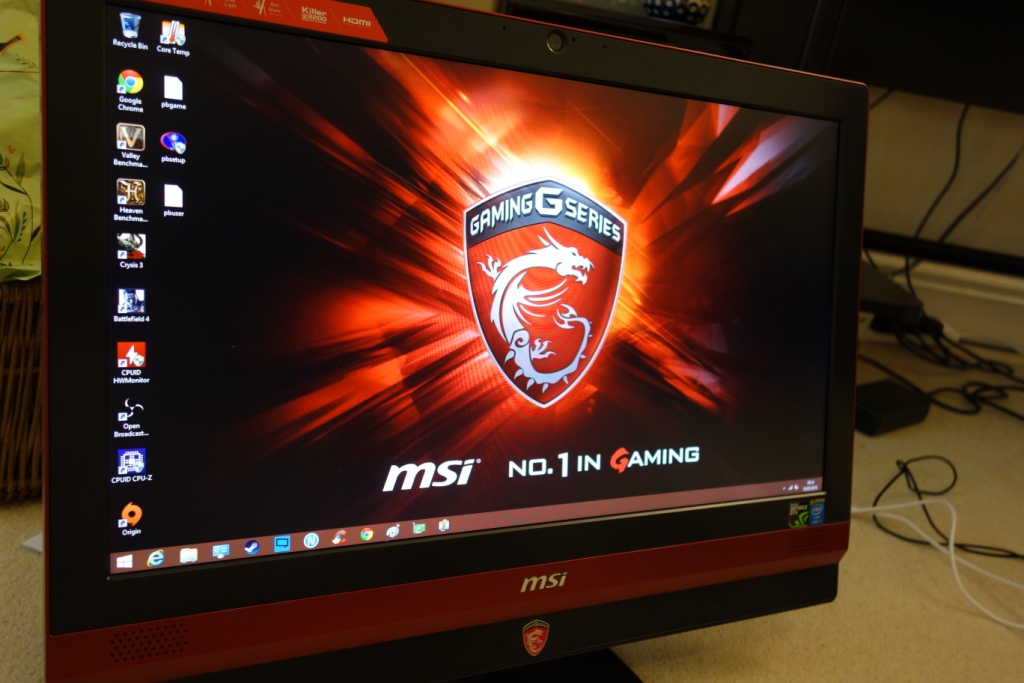
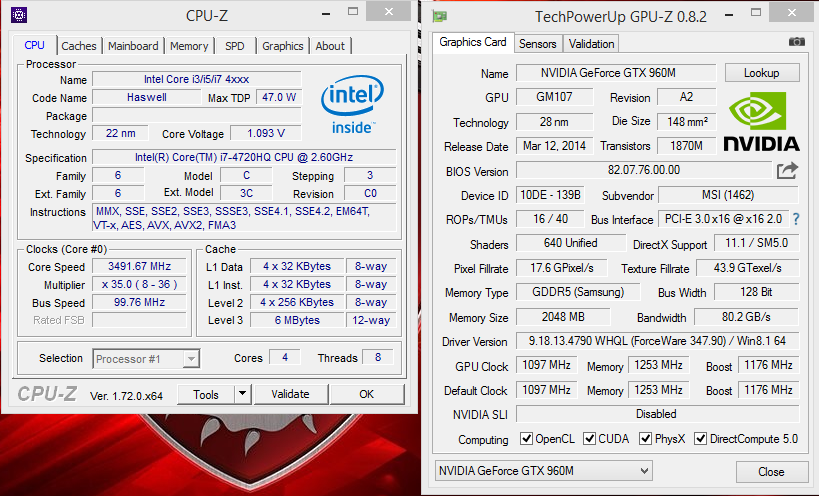
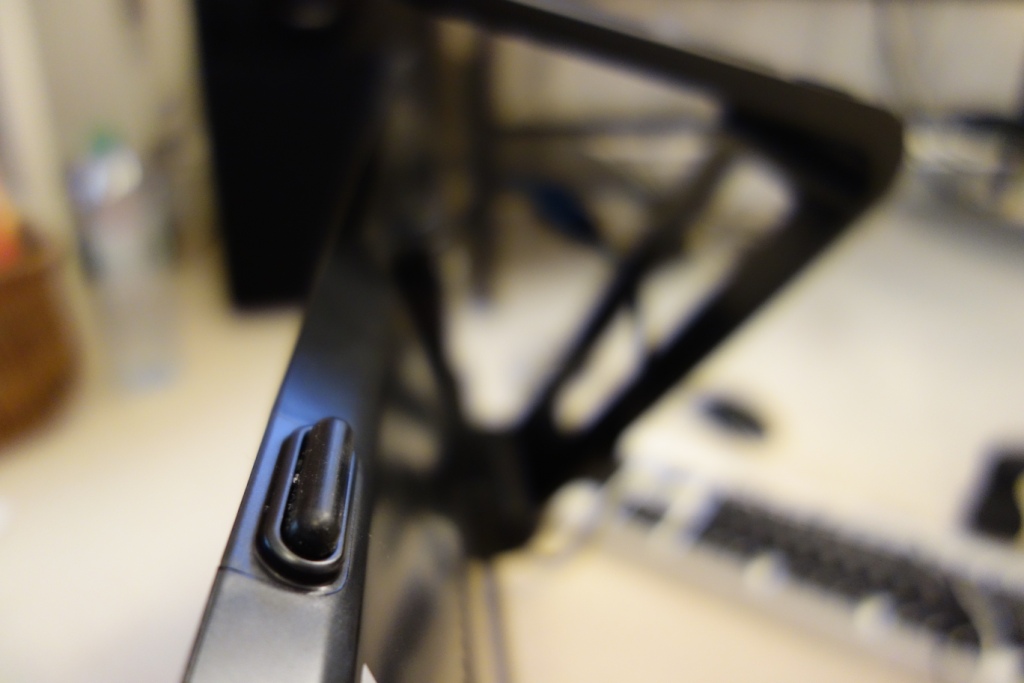
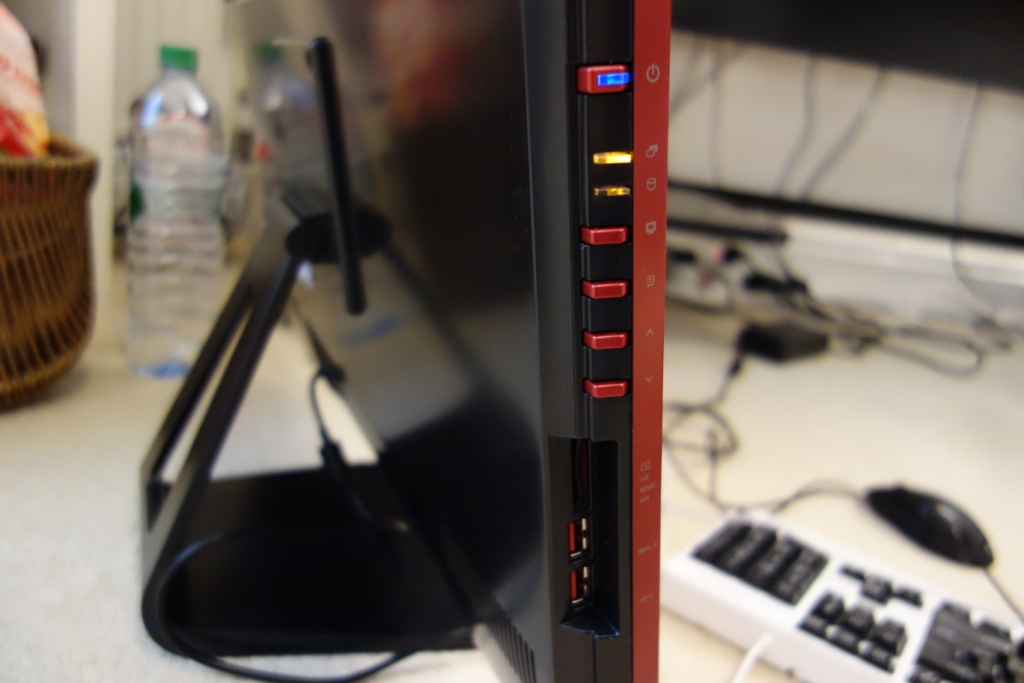
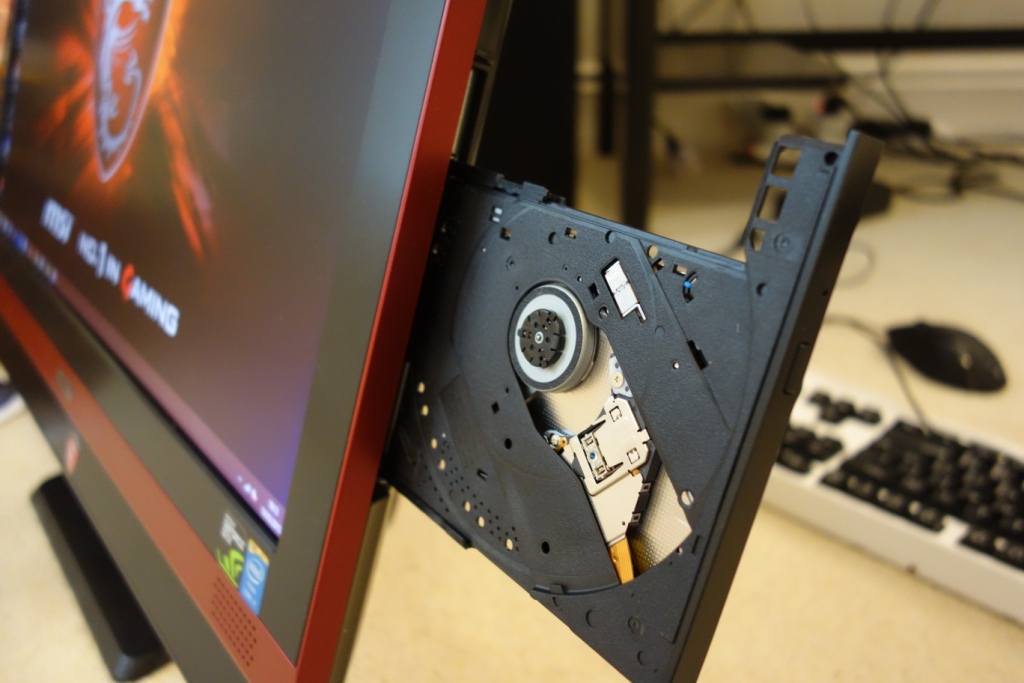
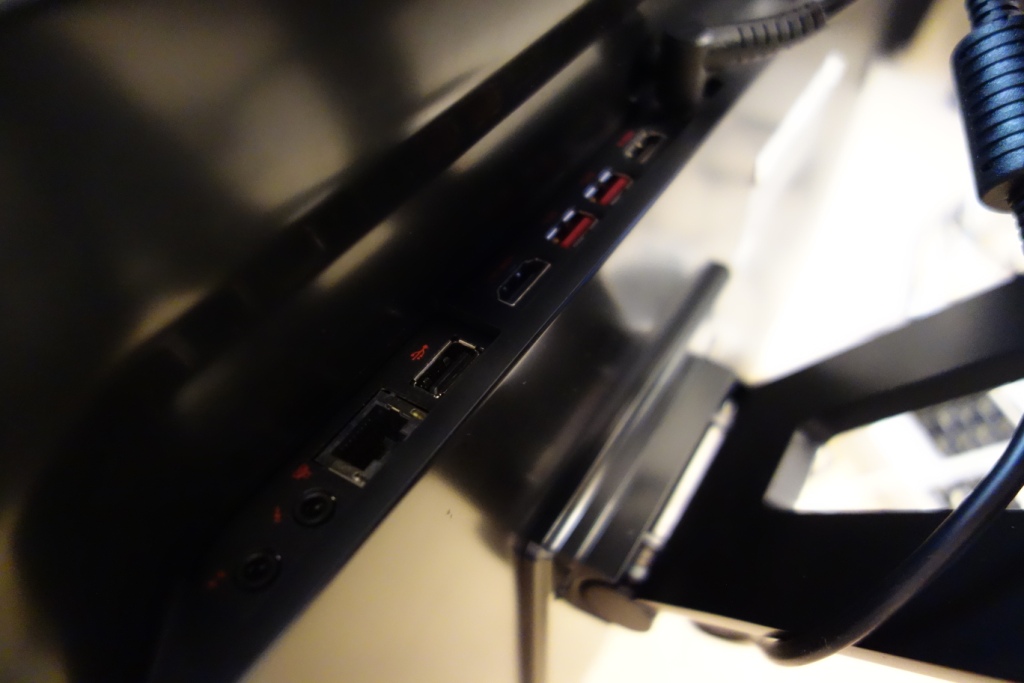
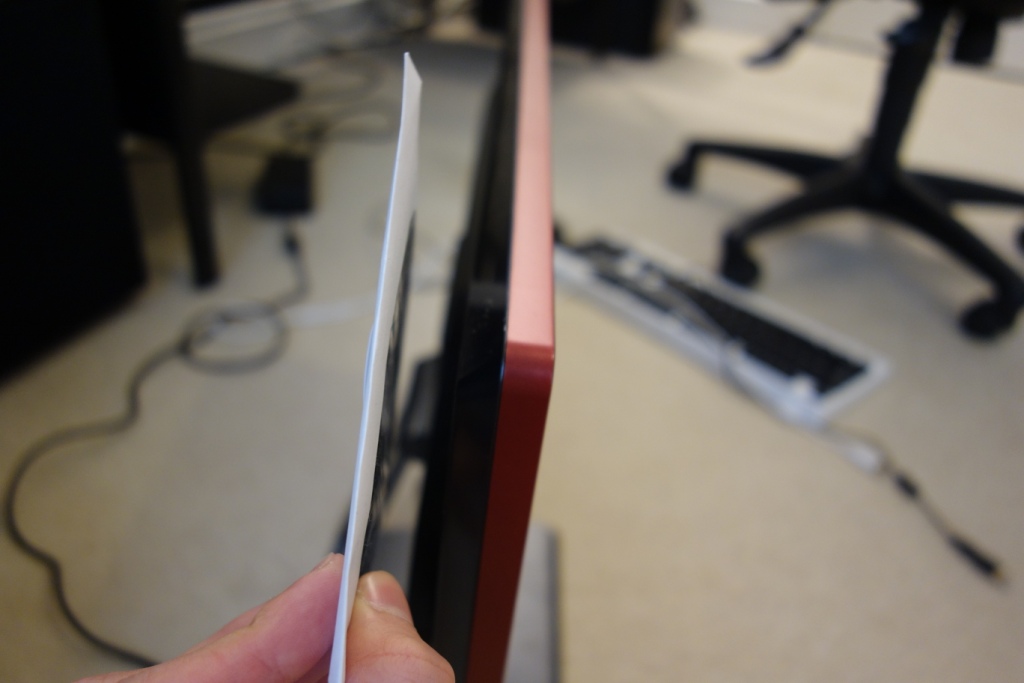
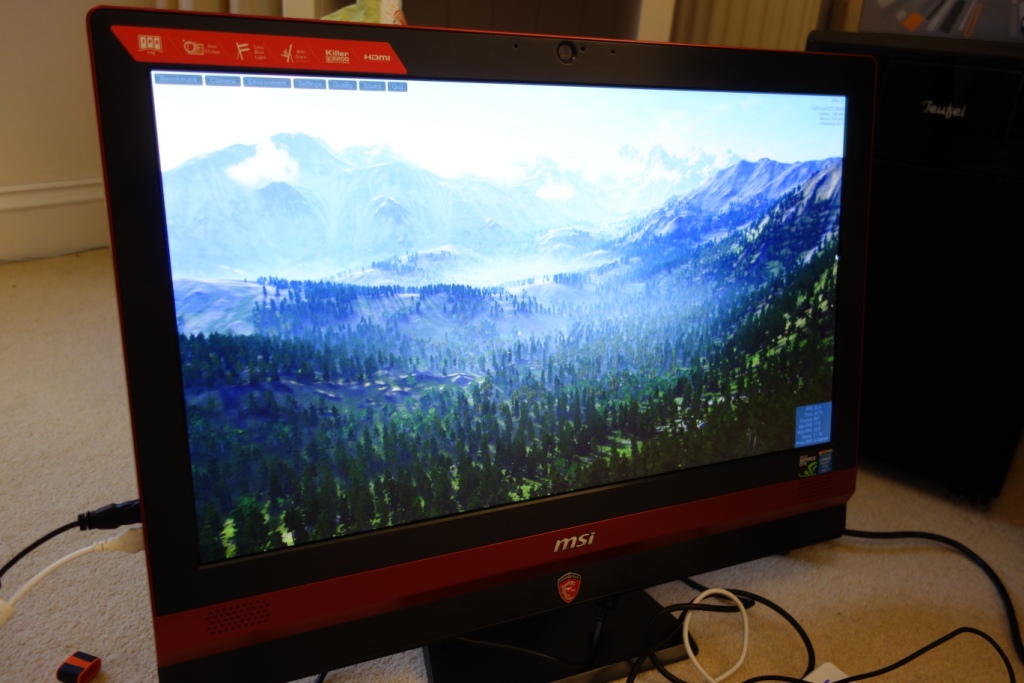

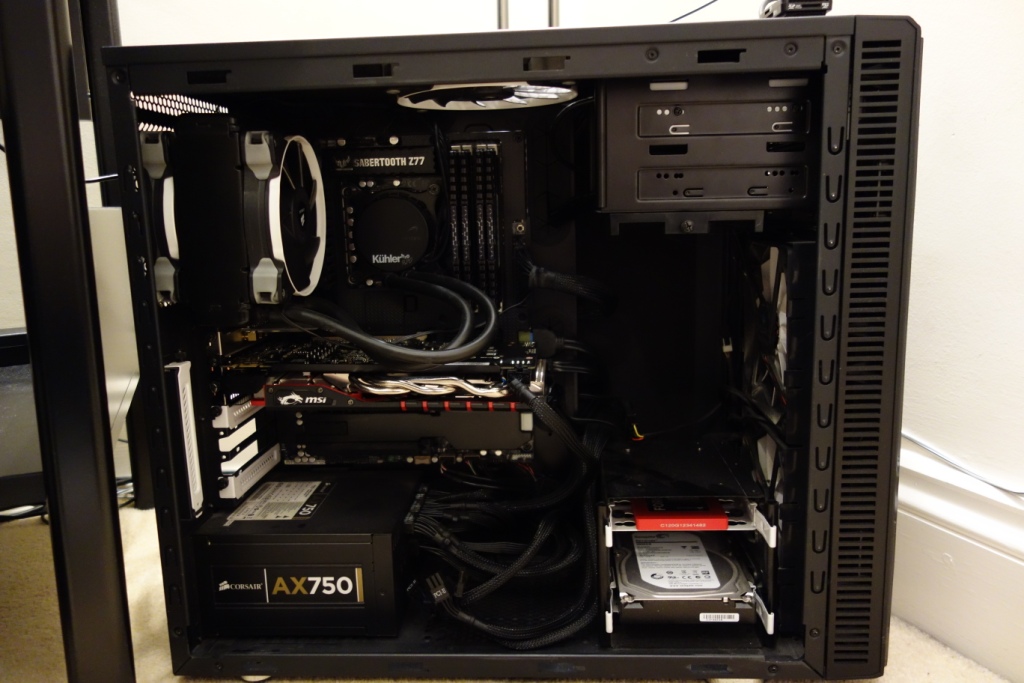
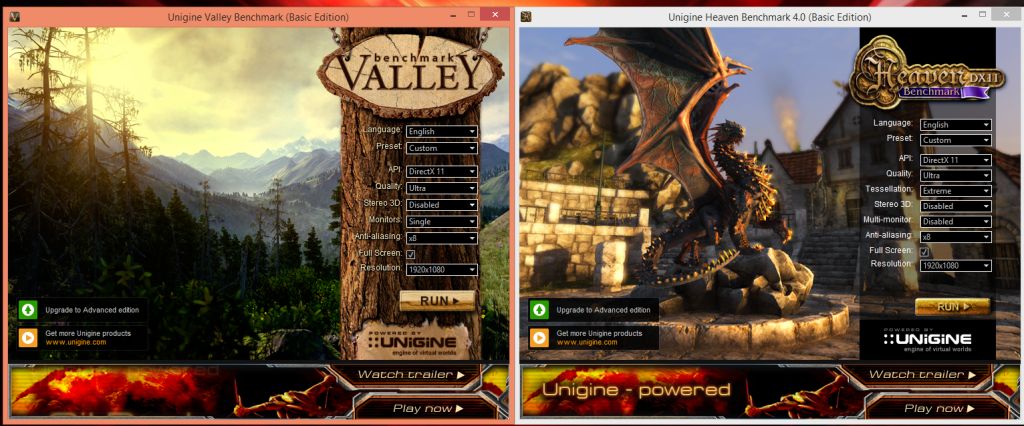
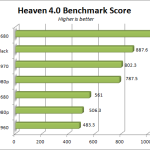
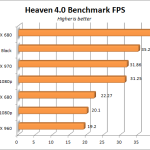
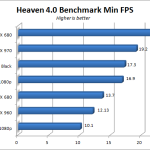
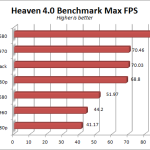

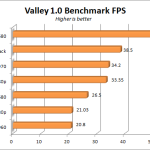
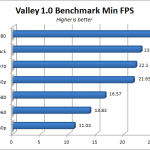
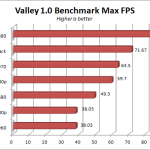
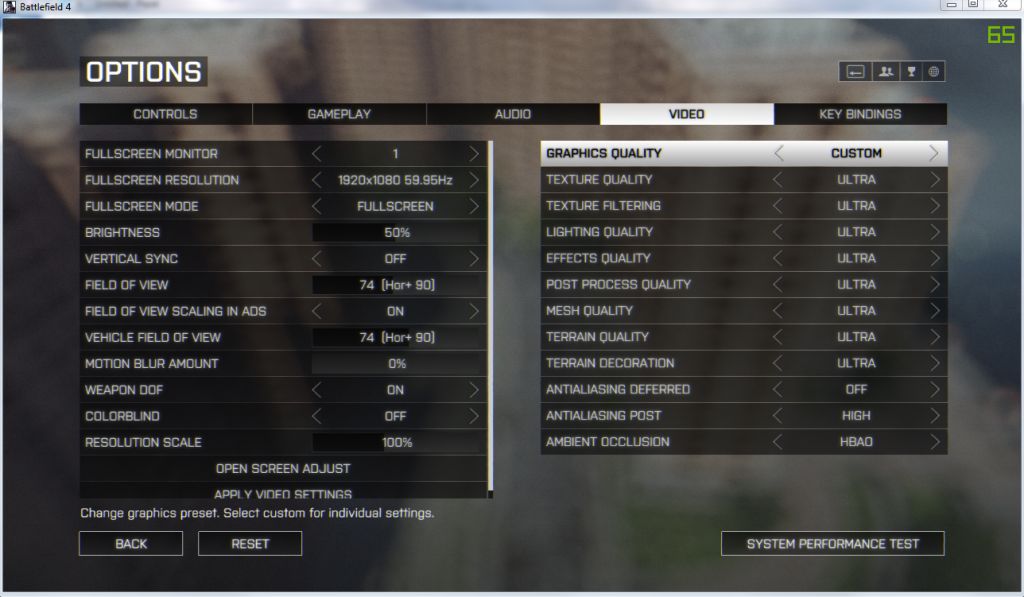
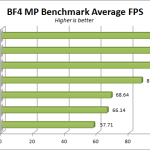
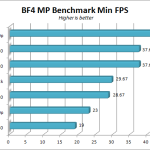
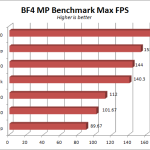
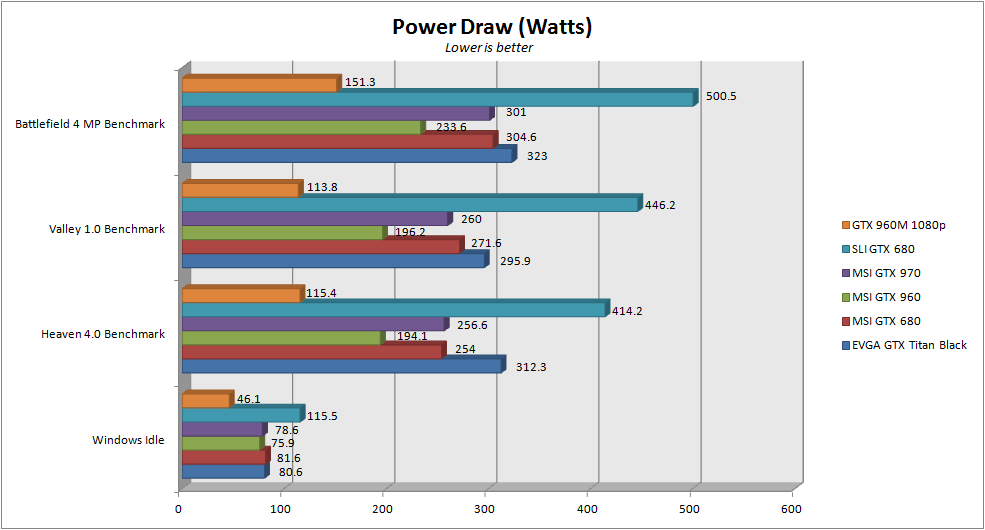
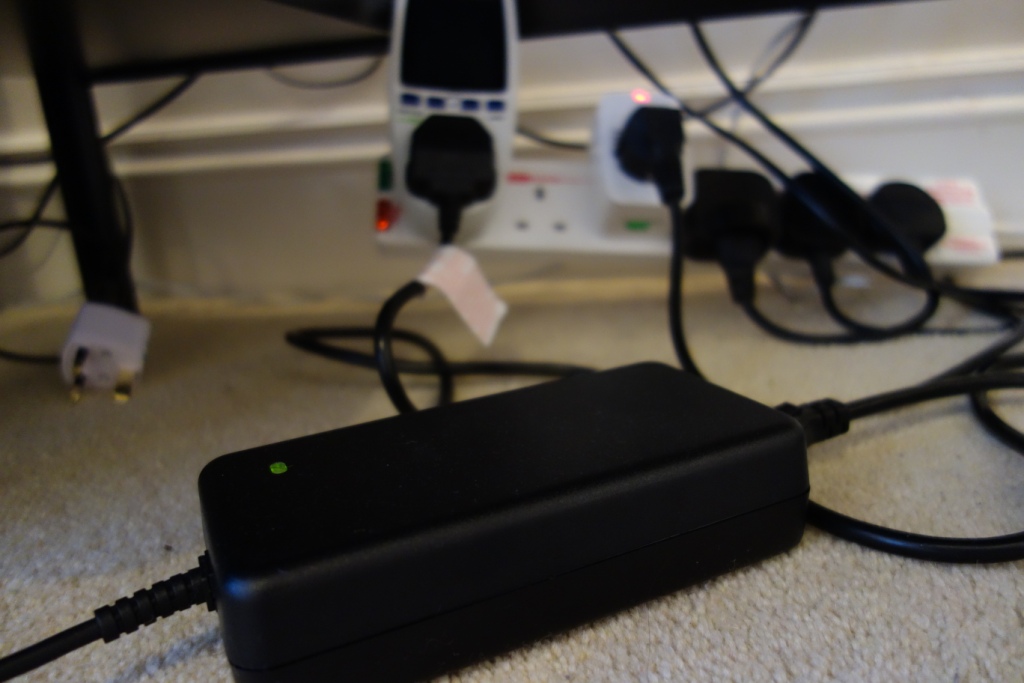
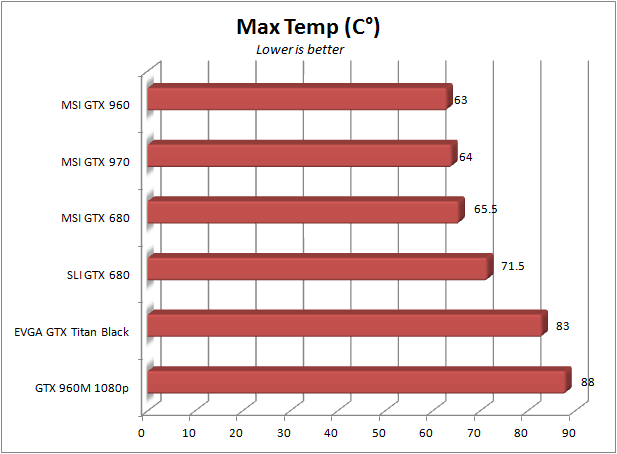
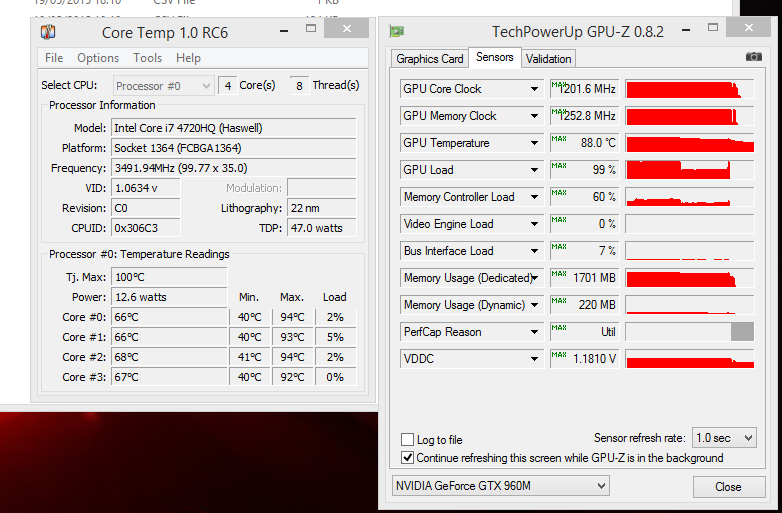
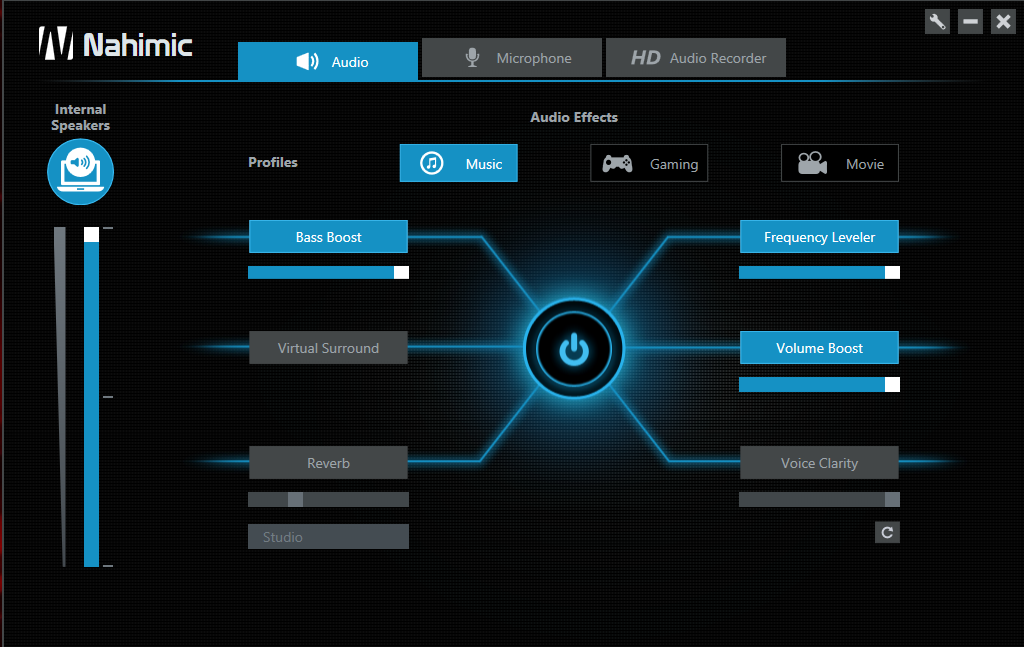
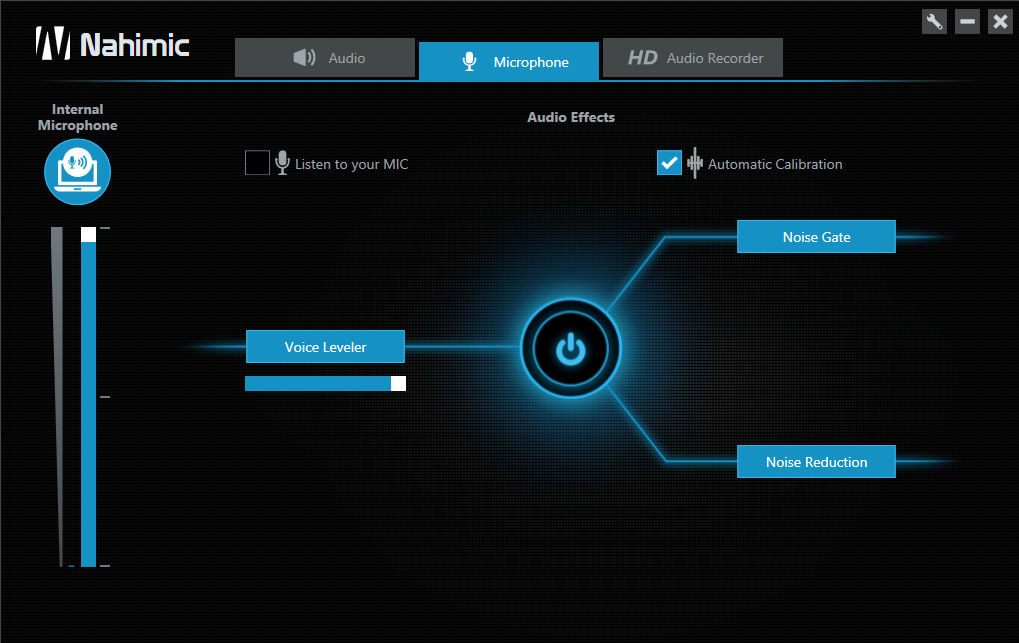
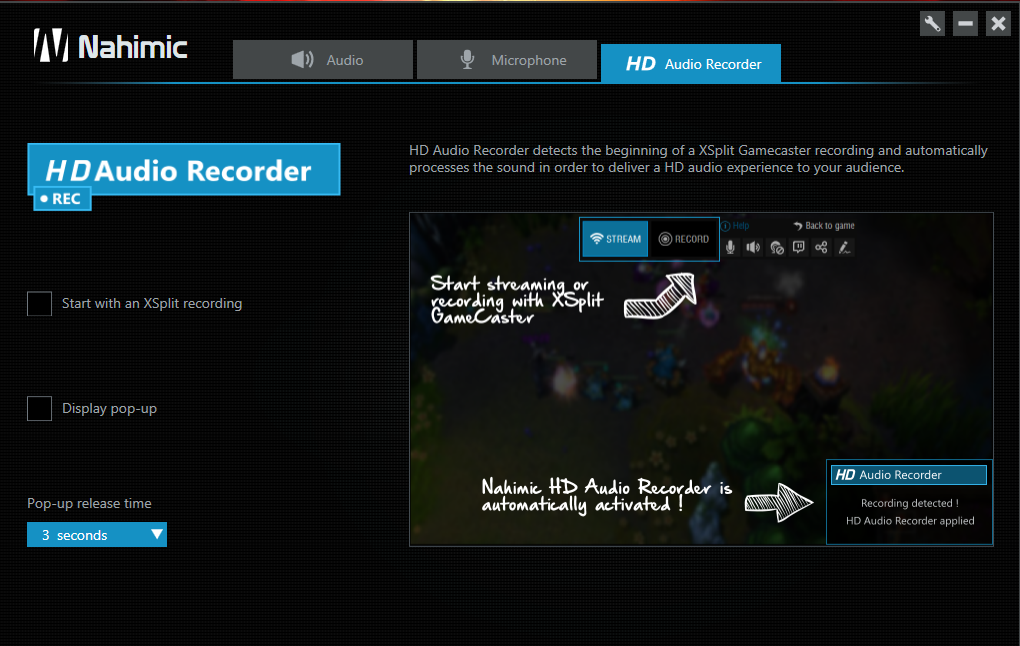
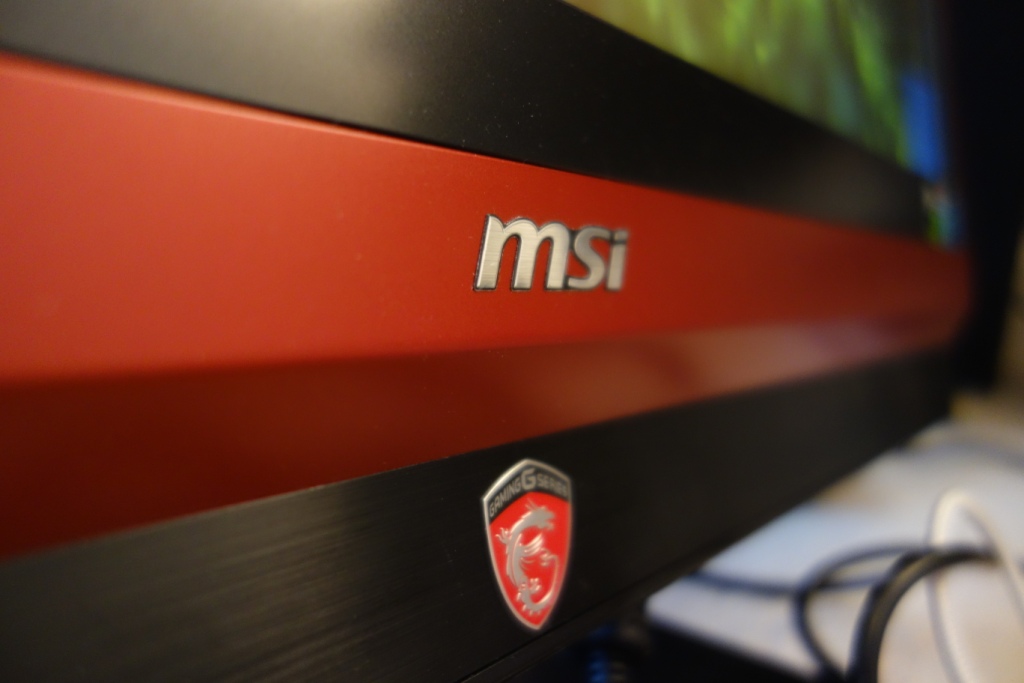
This is for sale in pc world for £799. My son wants a gaming PC for Xmas. I know nothing – can you recommend one at this price range.
Many thanks for your review.
Hi Pete,
I’m not really sure what else to recommend to be honest. You have to look if your son would be taking it on the go too – as you could easily buy him a laptop. There are also pre-built PCs at OverclockersUK and ScanUK which I would take a look at if I were you. I would imagine you would get a better deal of a pre-built tower PC, than with this MSI.